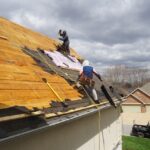Wiring a custom home is much more than simply installing wire. It would be best to have a licensed electrician with experience in the latest technologies and a solid understanding of how they work together.
An E-house is a prefabricated integrated power assembly designed to house electrical equipment and meet specific operational requirements. Its design, construction quality inspection, and testing are completed in a controlled factory setting.
Wiring
The wires running throughout custom E-houses are critical for powering appliances, lighting, and electric car chargers. This means that when your wiring is not in top condition, it will negatively affect everything in the home that depends on working electricity.
It is essential to ensure your wiring can handle the environment’s voltage, current, frequency, and temperature. To achieve this, the wires need to be correctly designed and implemented. For instance, the cable cross-section and the sheathing material must guarantee that the wires will transmit the required energy. Another crucial factor is the seaming of the cables, as incorrect seaming will compromise the safety and functionality of the electrical system.
Electrical devices like outlets, wall plates, and switches are also essential for connecting and controlling the wires. The wires must be insulated to ensure they don’t conduct electricity outside the intended area. This is important for reducing fire hazards, as well as preventing shocks. In addition, insulation materials must be able to withstand the elements. For example, plastic options like polyurethane and ethylene will hold up to heat, while rubber and fluoropolymer insulations will hold up to chemicals.
Having the proper quality insulation can significantly extend the life of your wiring. It can also help to reduce the likelihood of electrical leakage, which can be caused by metal corroding or touching components like frameworks and other wires.
Electrical Panel
An electrical panel is the heart of your home’s electricity system. It is designed to distribute power throughout the house and keep it safe. It is also critical for the safety of your electronics and appliances. If your electrical panel is outdated, it may not be able to handle today’s technology. This can lead to circuit overloads and fire hazards.
If you are considering remodeling your home or adding a new appliance, it is essential to have your electrical panel upgraded. Older meetings are wired with aluminum that cannot withstand the high amps of today’s devices. The risk of fire and electrocution is much greater in these older homes. It is best to have a licensed electrician inspect your home’s electrical system before installing anything significant.
A custom electrical panel is an enclosed metallic box that houses several circuit breakers for power supply, transformers for voltage leveling according to the need, terminal blocks for housing different voltage level lines, PLCs for logical operation and automation, relays or contactors for mechanized functions; network switches for communication connectivity and HMI (Human Machine Interface) that allows operators to monitor and control machinery operations.
Custom electrical control panels are often stored in closet-style enclosures. Most have a single or double door for easy access. They are protected against water, dust, and other environmental factors. They usually have a dead front that prevents someone from accidentally touching live wires in the panel.
Sub-panels
Often, homes must add a subpanel to accommodate their electrical usage. The central panel may reach maximum capacity because of additional appliances, electronics, or home additions.
Electrical sub-panels are small circuit breaker panels that help distribute power throughout your house. They get their power from a double-pole 240V circuit breaker in the main service panel and then circulate it through different branch circuits in your home.
Subpanels are helpful if you have too many appliances and devices for your main panel to handle, which can cause an overload and lead to fire hazards. By installing a sub-panel, you can easily switch off the current flow to that specific area of your home in the event of a fire.
The electrician must calculate the load if you plan to add a subpanel to your custom electrical house. This is done to ensure that the subpanel has enough space to accommodate your current and future electrical load, which will prevent overheating and fires. The load calculation considers the wattage of the appliances and devices connected to the sub-panel and the total number of breakers in your main panel. A right-size wire will also be needed to secure your subpanel to the main board. The preferred cable is called service entrance rated (SER) cable, which works best for these applications.
Switchgear
The right equipment can protect electrical equipment from fault currents, whether a high-voltage or low-voltage switchgear. It also helps prevent injuries and damage during maintenance sessions by disconnecting or isolating the circuits. Switch gears use a combination of electrical control and protection devices, including fuses, switches, circuit breakers, and transformers. The simplest is the breaker, which shuts off the power flow when there’s an overvoltage or overload fault. They’re usually housed in a protective enclosure. Another important switchgear component is the protection relay, which opens a faulty circuit branch and isolates it from others. This ensures power continuity to the healthy departments.
Unlike switchboards, switchgear is designed to handle higher voltages, up to 350 kV. It has switching devices for lower to medium-voltage circuits. It has fuses, LV circuit breakers, HRC fuses, earth leakage (EL) circuit breakers, offload electrical isolators, MCBs, and MCCBs. Switchgear also uses heaters inside panels and enclosures to maintain temperature and minimize moisture, which can cause oxidation of electrical components and internal failure.
Depending on the voltage and type of switchgear, it may require special housing. Moreover, it requires regular inspection and testing to ensure proper operation. Furthermore, it’s costly equipment for its initial purchase and ongoing maintenance. However, you can mitigate these disadvantages by purchasing a suitable one for your needs and adhering to safety protocols.




